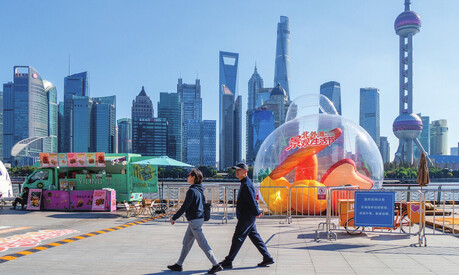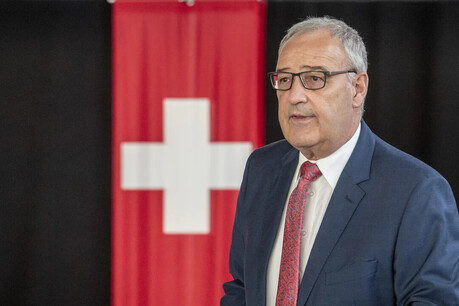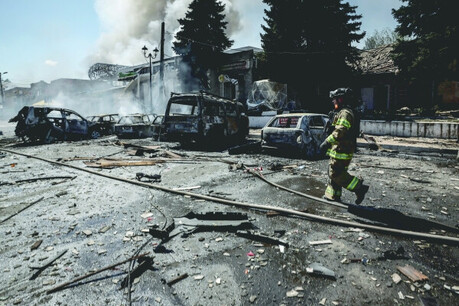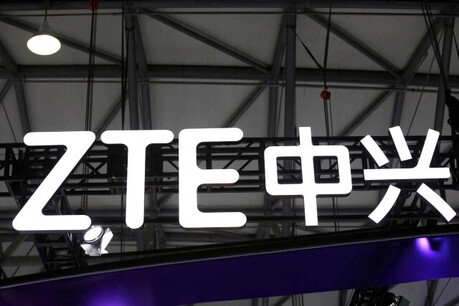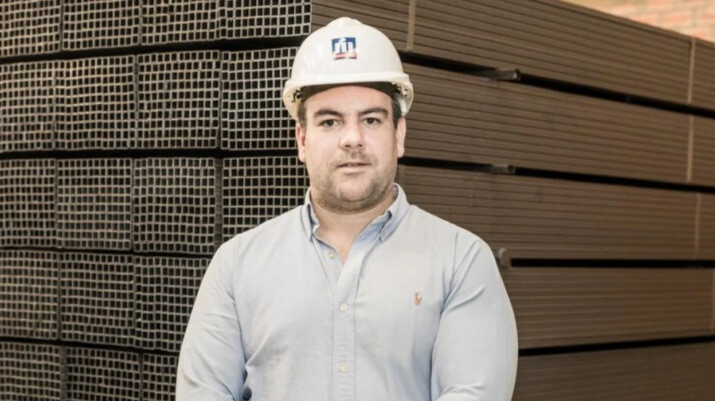
Rodrigo Schussmüller Infrán (33), CEO of Industria Metalúrgica Schussmüller SA and Director of Hierro Mat SACI.
The Paraguayan steel industry is expected to continue its expansion, driven by growth in the construction and manufacturing sectors. In particular, the increase in infrastructure projects in both the public and private sectors is acting as a major driver of steel demand. In a recent interview, Rodrigo Schussmüller, President of the Paraguayan Chamber of Steel Industries (CAPAC), stated that approximately 450,000 tons of various steel products were imported into Paraguay in 2024, and this figure would have been even higher if not for logistical disruptions caused by low river levels at the end of the year. The following is a transcript of the interview with President Schussmüller.
- How is the local production situation in the steel industry under your leadership as President of the Association?
The Paraguayan steel industry has shown steady growth in recent years, but it still relies heavily on imports of raw materials to meet domestic demand. Although there are companies in the country that produce steel bars, profiles, tubes, and sheets, their production capacity is continuously expanding. The main drivers of steel demand in Paraguay are the construction and manufacturing sectors, with particularly strong growth in public and private infrastructure projects. These sectors are the main consumers of steel products such as tubes, profiles, and sheets, which are commonly used in construction and industrial sites. Numerically, around 450,000 tons of various steel products entered the country in 2024, and this figure would have been even higher if not for the logistical operational disruptions caused by the drop in the level of the Paraguay River in the last quarter of last year.
- What changes have occurred in the supply side of the steel industry in recent years?
In 2024, the steel sector experienced significant growth driven by infrastructure investments and increased commercial activity. However, the last quarter of the year presented considerable difficulties due to the severe drop in the level of the Paraguay River. The decrease in the river's water level limited navigability, reducing the full load transportation capacity of ships and barges. Consequently, the import of raw materials and other essential products decreased, leading to supply shortages and impacting the continuity of production. Over the past year, significant progress has been made through various investments and developments. Member companies of the association have invested in the acquisition of equipment and production lines, including sandwich panel lines, profile rolling mills, slitters, tube lines, wire rod rolling mills, and welded mesh manufacturing machines. These investments aim to diversify products and improve quality to meet the increasing market demand. Investments in the construction of industrial infrastructure and raw materials for the mentioned production lines have made it possible to increase production capacity, contributing to a reduction in import dependence.
- What are the most emblematic construction projects that the steel industry is currently involved in?
Our industry plays a crucial role in several emblematic projects in the country, both public infrastructure projects and real estate developments driven by national and international private capital. Some examples of public infrastructure include the Bioceánico bridge connecting Carmelo Peralta and Porto Murtinho, the construction of high-complexity hospitals such as the Gran Sur Hospital, the Chaco Central Hospital, and the Coronel Oviedo Hospital, where steel is a fundamental element in metallic structures.
- What is the real impact of the entry of products/materials from the Asian market on the domestic industry?
The Paraguayan steel derivative products industry has undergone a significant shift in its sources of supply, especially in recent years, with a growing preference for steel products of Chinese origin. This change is due to the fact that Chinese suppliers have offered better commercial conditions compared to traditional regional suppliers such as Brazil and Argentina.
- What harm do you suffer when domestic manufacturers are not considered in some tenders?
Domestic manufacturers have been equipping themselves with machinery and infrastructure, producing high-quality products that are on par with those from other markets. We are fully capable of competing under equal conditions. We only need the opportunity from government authorities and to be considered in government-funded infrastructure and asset investments. If Paraguayan companies are not given these opportunities, we lose domestic jobs, taxes that remain in the country, and the linkages of multiple local suppliers that energize the economy.
- How can the association make its voice heard so that the authorities better recognize the quality of the national industry?
The association needs to position itself as a key player capable of offering valuable technical and economic solutions to the country, going beyond simply representing the interests of companies. We must develop proposals that clearly highlight how the use of domestically produced steel can benefit the nation in terms of employment, economic development, and autonomy. These proposals must be based on evidence and positively impact the growth of the industry.
- What are the economic growth prospects?
The construction industry will be one of the main drivers of growth, which directly impacts the demand for reinforcing steel, cement, and other materials, which can be positive for sectors such as steel and metalworking. Sectors such as energy, agriculture, manufacturing, and technology are also attractive to investors.
- How many professionals and workers are employed in the steel sector?
It is estimated that the Paraguayan steel derivative products industry directly employs around 2,500 people in various roles. This figure includes both professionals and workers employed in factories and companies involved in the distribution and sale of steel and general steel products.
- How many companies make up the association?
The Paraguayan Chamber of Steel Industries currently consists of seven traditional companies that are the main representatives of the steel sector in Paraguay. These companies play a crucial role in the production, sale, and distribution of steel products, as well as in promoting the development of the national steel industry. CAPAC member companies work together to strengthen the competitiveness of the sector, improve product quality, and jointly promote sustainable development within the steel industry.
- How does the association operate?
I assumed the presidency of the Paraguayan Chamber of Steel Industries this year, an association that brings together the main traditional manufacturers and distributors of tubes, profiles, and sheets in the country. We are also actively involved in other businesses, allowing us to generate value and contribute in various fields.
Paraguay has an industrial base that produces steel bars, profiles, tubes, and sheets, but its production capacity is still expanding. In 2024, approximately 450,000 tons of various steel products entered the country, and imports would have been even higher if not for the drop in river levels at the end of the year.
[Copyright (c) Global Economic Times. All Rights Reserved.]
















